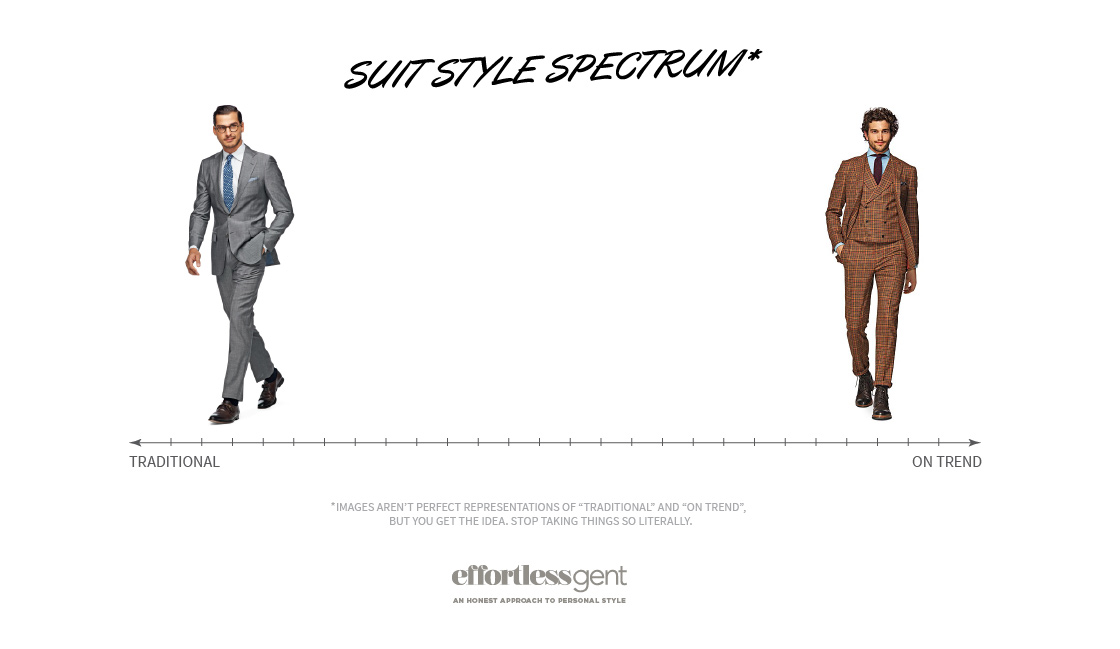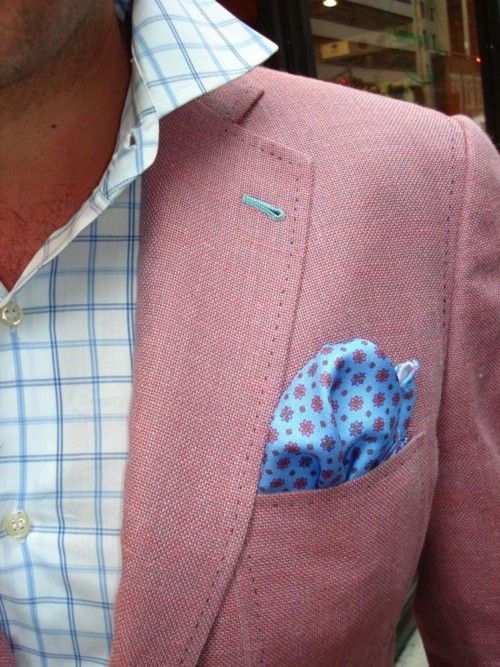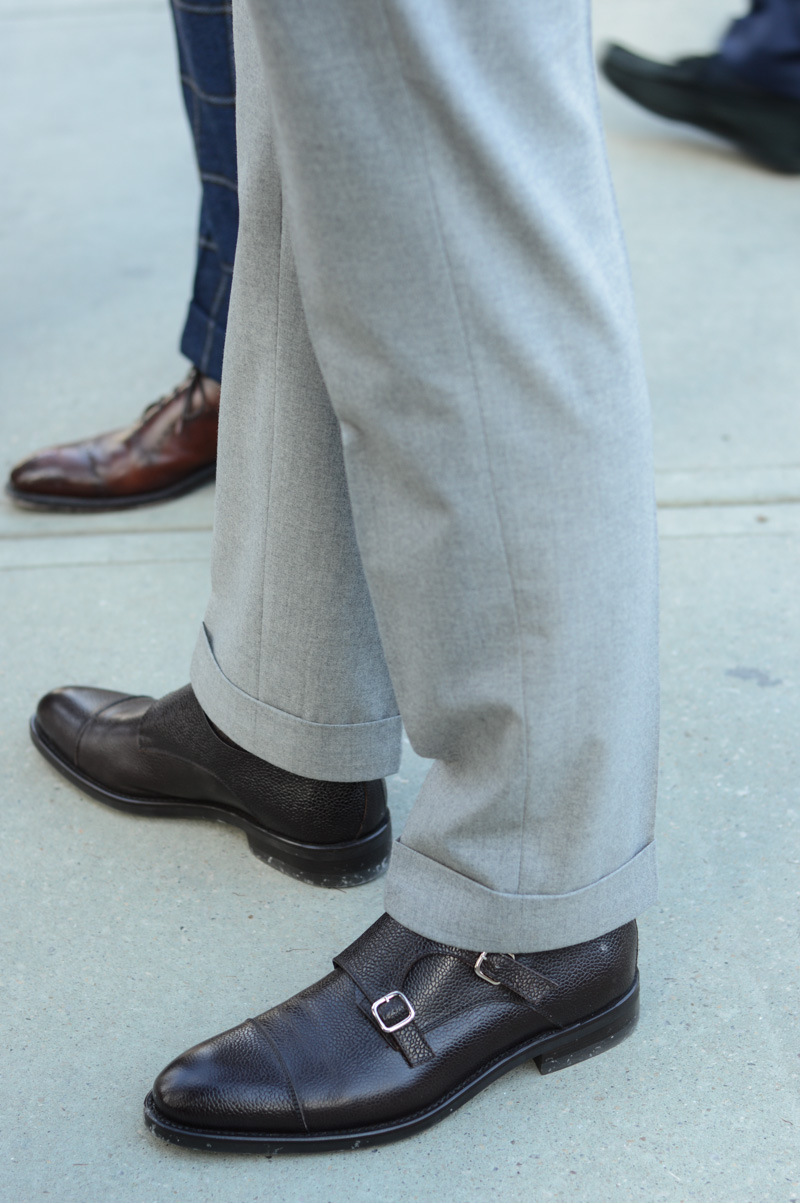I imagine that if you’re not a daily suit wearer, you want the one or two suits you own to last a long time, and to be stylistically relevant for as long as possible.
The most versatile suit you can own would be a medium-weight wool suit (super 100s or 120s) in a medium grey, with a two-button, single-breasted, double-vented jacket.
Despite the detail of that description, there is still a lot open to interpretation.
- Cuff or no cuff?
- Can I have pattern and texture on grey fabric?
- What is the ideal lapel width?
- How much break should my trousers have?
While there are many little details to look out for—or adjust, if going custom—pay particular attention to these five areas when shopping for your next suit.
I want to help you avoid certain trends so you can land on the most timeless silhouette possible.
Something to note: You may very well end up with a boring suit. Let’s just be real here. It’s like going to an ice cream shop and ordering plain vanilla.
However, you will have a suit that transcends most, if not all, possible
You could always inject it with a little personality by wearing an interesting
Another thing: It’s not bad to have a “trendy” suit. In fact, I don’t have a 100% traditional, trend-free suit. And you may not want to either.
First, let’s define the spectrum
Imagine a spectrum that spans left to right. Left being über traditional, right being every current suit trend out there right now.
It’s like a style spectrum. A SUIT style spectrum!
Boom. Suit Style Spectrum™.

Anyway, imagine the SSS (I abbreviate everything) and where you’d like to land. The further left you are, the more classic your suit is, and theoretically, the longer it will be relevant.
This is your traditional Brooks Brothers– or Paul Stuart-type suit.
The further right you go, the more your suit reflects current market trends, and the bigger your chances are of looking dated in a few years as said trends change (assuming you go full-tilt).
Below, I’ll point out a few areas that need your attention, how men are currently wearing their
Choose to follow the more conservative route for one, a few, or all of these… it’s up to you.
Fabric Pattern

Bold
There’s a problem with bold, obvious patterns, however.
If you only have one or two
With solid grey (or navy), people won’t know if you have one suit, or ten.
The Classic Choice: Once you have your basics down, feel free to invest in more exciting fabrics. But for now, get something basic.
What’s considered basic? Solid navy or grey (medium grey to charcoal). I personally prefer a medium grey. It’s easy to wear no matter the season, and as far as a darker colored suit, you have your bases covered with the navy.
If you want to step up the interest level a bit, you can go for a subtle texture like sharkskin or birdseye, but avoid stripes or checks.
Lapel Width
As of writing this, it seems wide lapels (3″ / 9cm and wider) are the norm. I’ve seen

Rewind back a few years, and most lapels were slim or skinny (2″ / 5cm or slimmer), to match all the skinny ties and short collars.
Funny how the proportions we favor can shift within a few short years.
This whole thing is cyclical, too. We’re eventually going to go back to skinny everything, and then back to wide again. Who knows, if you’re reading this five years after I wrote it, it’s possible that slim lapels are en vogue again.
The Classic Choice: Go for a lapel width where the widest point is roughly half the distance to your shoulder seam.

For me, that’s about 2.5″ – 2.75″ wide (6.3-6.9cm).
If you’re 6’5″ with broad shoulders, a 2.5″ lapel may be too narrow. And if you’re small with narrow shoulders, 2.5″ may be too wide. It’s all dependent on your build and proportions.
And remember the width of your lapel should be similar in proportion to your tie and
Trouser Leg Width
It seems that fuller cuts (as well as pleats and higher waists) are coming back into style, although most people are still rocking a trim silhouette.

Some border on skinny, which looks fine if you have the body type that supports it. See my point above regarding lapel widths and proportions.
The Classic Choice: A relaxed, straight leg fit with a rise that allows you to wear above your hips, though not necessarily high enough to wear on your natural waist.
A “relaxed fit” being one that’s still flattering and not at all wide or baggy, but not slim like your denim may be.
Trouser Break
Most fashion-forward individuals favor no break, where the trouser cuff grazes the top of the shoe.
This looks great if done correctly. The pants should also be tapered; if they’re a straight cut, having no break isn’t as flattering.

The Classic Choice: A half break. This is a good middle ground, considering a full break can sometimes seem like too much material bunching at the ankles, especially if you have a fuller leg and wider opening.
Trouser Taper
I personally think a slight taper is more flattering, especially with a slim or straight leg.
Choose a leg opening narrow enough so your cuffs aren’t flapping in the wind if you go with a half break. The actual width varies, since it will depend on the width of your pant leg, which depends on your build, and so on.

The Classic Choice: If your trousers are a more classic silhouette, you obviously will have no taper. It will be straight all the way down to the leg opening.
BONUS: Jacket Length
A few years ago, suit styles were trending towards narrower, tighter, slimmer, and shorter.
To an extent, slim is here to stay (thank God), but since you’re shopping for a more classic look, you don’t want to overdo the tightness or the shortness (of anything, really).

The Classic Choice: Your jacket needs to be long enough to cover your butt. Plain and simple.
More specifically, the bottom of the jacket should be at the point where your glutes curve in and meet your thigh.
There’s room for interpretation here. Because of my build, if I get a traditional length jacket, it appears too long on me, so I prefer mine slightly shorter (but still having ample butt coverage) to stay visually proportioned. You’ll have to experiment with a few lengths to see what works best for you.
When jackets are cropped short and a man’s butt is exposed, I always think of that episode of The Office when Michael Scott wore a women’s suit.
Lady
Finally
There are many little stylistic details to pay attention to when shopping for a suit.
But, assuming you want as “classic” a suit as possible—classic is in quotes because, in reality, classic is somewhat of a moving target—figure out where you want to fall on the Suit Style Spectrum™, pay attention to these five (six!) areas, and you should be good to go.
Questions? Concerns? Other potential problem areas to
